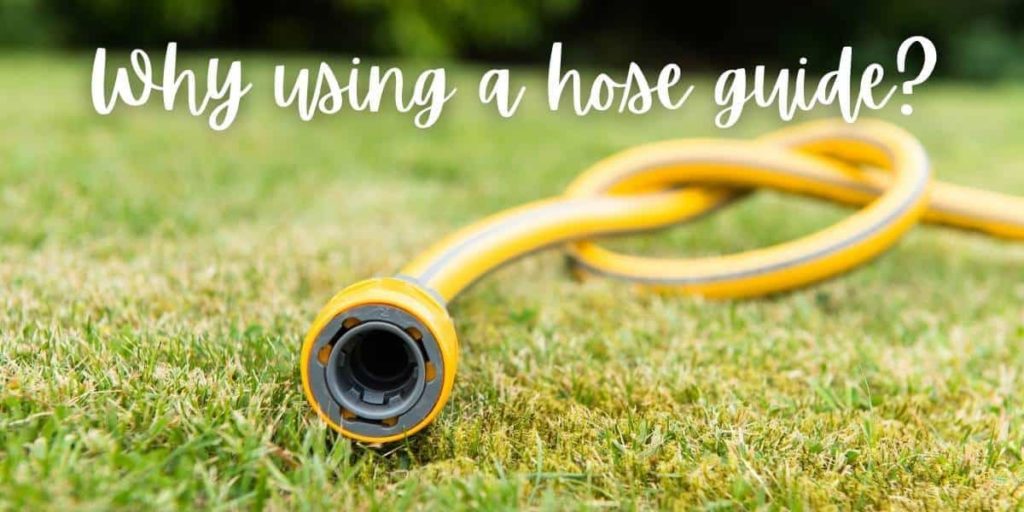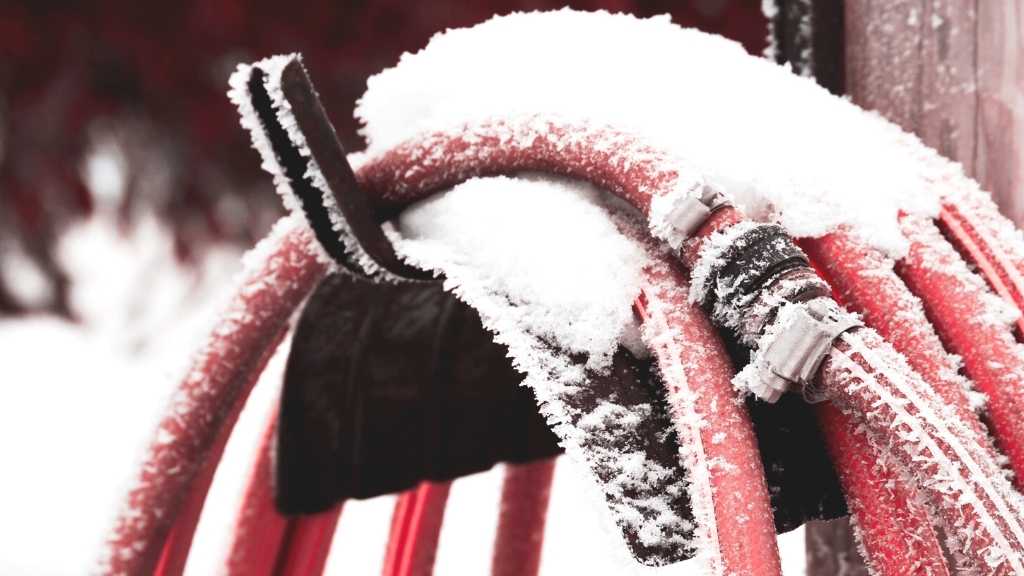Are you a garden lover? If you are, then you are probably doing your best to keep your garden green and healthy. While doing so, one of the most important actions you can take is watering your garden.
You probably have at least one water hose and use it daily, but did you notice how challenging sliding it throughout the garden can be? With every step you take while using it, you must always keep an eye on the direction in which it moves so that it doesn’t bend or break your garden plants or simply get stuck. To help solve this problem, hose roller guides were invented!
This post is dedicated to hose guides and how they can help making the recurrent watering activities easier. Keep reading to find out more!
What Is A Water Hose Guide?
A garden hose guide is a tool that helps you maneuver the garden hose across the garden beds and slide it around any existing corners, without damaging the plants, flowers, or the water hose itself. It also improves the overall sliding of the water hose and prevents it from tangling as it will roll on the hose guides smoothly, towards the desired direction.
Even if you have set up a complicated irrigation system for your garden, it is inevitable that at some point you will need to pull out a garden hose to water a specific area of the garden, or certain plants that might need more watering and attention. As you do this, there are high chances you accidentally knock down some of your favorite plants just by trying to control the water hose movement. This is where hose guides can play an important role and make things easier for you.
In this post, we will provide more details on how Garden Hose Guide Rollers work, how to use them, which are the main types of hose guides and what are the main benefits you can expect if you are starting using them. Ultimately, if you are a DYI fan, we will provide some simple steps to creating your own hose guide.
How Does A Garden Hose Guide Work?
It is very simple to start using hose pipe guides. The purpose is to create a safe path for the water hose to be moved throughout the garden.
First, you need to determine the places where it is more likely for your garden hose to get stuck, tangled, or cause damages by bending over other plants. That will be the perfect spot for one or more hose guides to be installed.
The aim is to guide the hose away from a specific area or guide it to turn left or right in a certain spot.
Depending on the size of the area that you want to protect, you will need to use one or more hose guides. The distance between two guides is of your own choice, but normally they can be installed at around 7 feet from one another.
What types of hose pipe guides are available and how to install a hose guide?
There are two main types of hose guides and they are categorized based on the where you can set them up. Therefore you can find hose guides that are installed directly into the ground and hose guides that are designated for wall-mounting.
Ground hose guide spikes have a spike on one end and a roller or a spinning guide on the other end. They do not require any initial assembly and you can set them up in a matter of seconds.
Installation is done as follows:
- Insert the hose guide spike into the ground by simply pushing it. Make sure you keep the spinning guides above the ground level. For the guides that have a metal spike, you will probably need to hammer them into the ground.
- Place the hose in the spinning guides and start sliding it in the desired direction
In case you need to move an already installed hose guide to another spot in your garden, or if you need to cut the grass in an area where you have installed hose guides, easily pull the spikes out and then insert them again where needed.
Wall-mounted hose guides are another model of available hose guides. These are most commonly used to protect the house corners. They can easily be used in a combination with a wall-mounted hose reel holder, to guide the hose from the hose reel.
Wall-mounted guides can be installed by drilling 4 holes into the wall to fix the guide. You can fix them near the hose reel or onto the specific corner of the house that you desire to protect.
There are several hose guides models to choose from, depending on the material they are made of, shape, and overall design.
You can find many options out there, from classic to contemporary, but most are designed to blend smoothly into any garden landscape.
Hose Guide Benefits
The main benefits for using a hose guide are:
- Avoid damaging your garden plants while using the water hose, which helps protect more fragile plants from bending or breaking.
- Helps protect your house corners from getting dirty and damaged.
- Help prevent the garden hose from getting caught in the ground or getting across the garden beds.
- Prevents your garden hose from getting tangled or kinking.
- Decreases the hose maneuvering effort while in use.
- Increases the speed and easiness of moving the hose across the garden.
How to Make A Copper Hose Guide
Hose guides are usually sold in batches of 4 to even 12 units per set, but even so, this might turn into a big expense, especially if you have a large garden space to cover.
As promised at the beginning of the post, if you are a DYI fan, you can try making your own hose guides. There is no previous experience required, just a bit of imagination and patience.
Below you can find the 5 simple steps to take if you consider making your own hose guides.
Of course, you can add other decorative accessories to your handmade hose guide. Maybe paint it into a different color, you can go as far as your creativity takes you.
- Grab rebar of an estimated length of 5/9 inches. If you don’t have a spare one left in your garage, you can easily find these at any construction site, just go ask the respective contractors. They will help for sure, and most probably for free as these are rebar ends that contractors normally will need to dispose of. Otherwise, you can purchase it from the hardware store.
- Hammer the rebar into the ground keeping one-third of the length above the ground.
- Grab a simple copper pipe, of a standard half-inch diameter. You can find it at any bricolage or hardware store.
- Cut the copper pipe if needed to match the length of the rebar.
- Slide the pipe over the rebar and you are done! When the hose moves by this hose guide, the copper pipe rolls on the rebar and it will easily guide the hose in the direction you indicate.
Conclusion
In this post we explained what hose roller guides are, when to use them and how to use them. Additionally, we explained the main reasons for which you should start using hose guides in your garden.
No matter how long your backyard hoses are, a hose guide will help you a lot while using them.
Start using them today, you will thank yourself for taking this decision!



